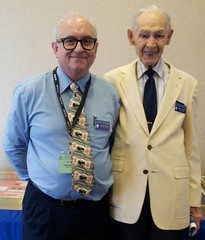
About UsThe Numismatic Bibliomania Society is a non-profit organization promoting numismatic literature. For more information please see our web site at coinbooks.org SubscriptionsThose wishing to become new E-Sylum subscribers (or wishing to Unsubscribe) can go to the following web page link MembershipThere is a membership application available on the web site Membership Application To join, print the application and return it with your check to the address printed on the application. Membership is only $15 to addresses in the U.S., $20 for First Class mail, and $25 elsewhere. For those without web access, write to: David M. Sundman, Treasurer AsylumFor Asylum mailing address changes and other membership questions, contact David at this email address: dsundman@LittletonCoin.com SubmissionsTo submit items for publication in The E-Sylum, just Reply to this message, or write to the Editor at this address: whomren@gmail.com
BUY THE BOOK BEFORE THE COIN |
- WAYNE'S WORDS: THE E-SYLUM SEPTEMBER 29, 2013
- CHARLES DAVIS MAIL BID SALE CLOSES NOVEMBER 16, 2013
- BOOK REVIEW: THE MEDALS OF KARL X. GOETZ
- THE JOYS OF BACK ISSUES OF THE NUMISMATIST
- EL SITIO NO. 8 PUBLISHED
- JAMES CHARLTON, 1911-2013
- NOTES FROM E-SYLUM READERS: SEPTEMBER 29, 2013
- ARTICLE INTERVIEWS RED BOOK EDITOR KEN BRESSETT
- FORBES LIFE HIGHLIGHTS NEWMAN COLLECTION
- FRICK SEMINAR ON DAVID D’ANGERS' PORTRAIT MEDALLIONS
- WHAT PRICE GLORY? MEDALS OF HONOR AUCTION RECORDS
- RIDDELL AND PATTERSON: A CURIOUS CONNECTION
- FIREHOUSE FIRE NEAR PHILADELPHIA MINT
- HARVEY STACK ON THE JAMES STACK COLLECTION, PART 1
- SPINNERET MACHINES IN NUMISMATICS
- NEW RESEARCH ON THE COIN COLLECTORS KLINE
- MORE COINS WITH IMAGES OF BOOKS
- CHARLEMAGNE, SWITZERLAND, AND NUMISMATICS
- IRELAND’S “GREAT LOCK-OUT OF 1913” CENTENNIAL COIN LAUNCHED
- INTERVIEW WITH LOCK-OUT COIN DESIGN RORY BRESLIN
- CONTROVERSY OVER CHINA'S COIN-SHAPED BUILDING
- BRITISH MUSEUM VIKING EXHIBIT INCLUDES COINS
- FEATURED WEB PAGE: THE COINS OF ECUADOR
Click here to access the complete archive
To comment or submit articles, reply to whomren@gmail.com
WAYNE'S WORDS: THE E-SYLUM SEPTEMBER 29, 2013

New subscribers this week include Jason Villarreal of Goldberg Coins, courtesy of Jim Neiswinter. Welcome aboard! We have 1,670 email subscribers, plus 247 followers on Facebook.
This week we open with information on Charlie Davis' next numismatic literature sale, a short review of the new reprints of the Karl Goetz medal books, an article about some useful back issues of The Numismatist.
Numismatics has lost another legend - the Dean of Canadian Numismatics, James Charlton, has died. Several readers offer tributes. Other topics include Ken Bressett, Assayer John Leonard Riddell, the Collectors Kline and James A. Stack.
To learn more about the Museum Mazzuchellianum Catalogue, the Stone Mountain Half Dollar, the 1791 Sierra Leone "Piece" Dollar, coins with images of books, coin designer Rory Breslin, and the giant coin-shaped building in China, read on. Have a great week, everyone!
Wayne Homren
Editor, The E-Sylum
CHARLES DAVIS MAIL BID SALE CLOSES NOVEMBER 16, 2013
Charles Davis will be conducting his next sale of numismatic literature with a Mail Bid Sale closing November 16. The sale will feature The Michael Sullivan Collection of The Works of Wayte Raymond with additions from the libraries of John W. Adams, Gordon Frost and Rob Retz. Highlights will include, in no particular order
-
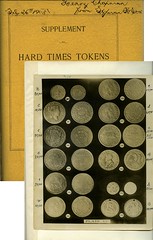 Museum Mazzuchellianum Catalogue 1761-1763
Museum Mazzuchellianum Catalogue 1761-1763
- Howard Newcomb’s card file with full descriptions in his hand of 1000 cents that comprised his collection
- New Netherlands catalogues complete, 6 volumes bound in Morocco
- William Sheldon’s copy of Wurtzbach Plates of Massachusetts Silver
- Dennis Cooper: The Art and Craft of Coin Making
- Henry Chapman’s signed copy of Low’s Hard Times Tokens with Adams Plates
- W. E. Woodward catalogues - 91 of the 108 numbered sales
- The Numismatist, 1921-1971 complete, bound in cloth
- T. Harrison Garrett’s copy of Slafter on Vermonts
- Peter Gschwend, James B. Wilson, Malcolm Jackson catalogues with Plates
- Revue Belge de Numismatique et de Sigilllographie 1904-1940 complete
- Crosby’s Early Coins of America, 3 different, one with Maris Plate
- Beazel: United States Counterfeit Detector
- Clapp & Newcomb The Cents of 1795-1814 handsomely bound as one
- Near Complete Run of the catalogues of M. L. Bolender
- Richard Eliasberg’s Deluxe Eliasberg/Brand Catalogue
- Dorothy & Grenville Bathe on Jacob Perkins
- Milwaukee 1986 Special Red Book signed by Yeoman
- Penny Wise and Colonial Newsletter, bound sets
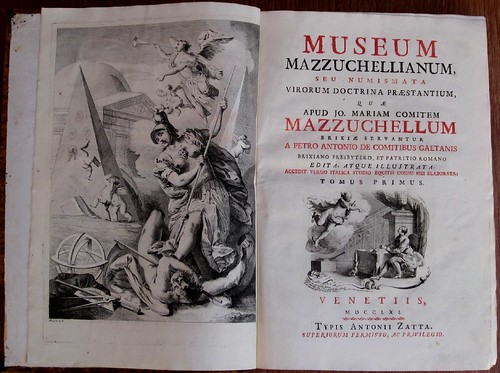
Museum Mazzuchellianum Catalogue 1761-1763
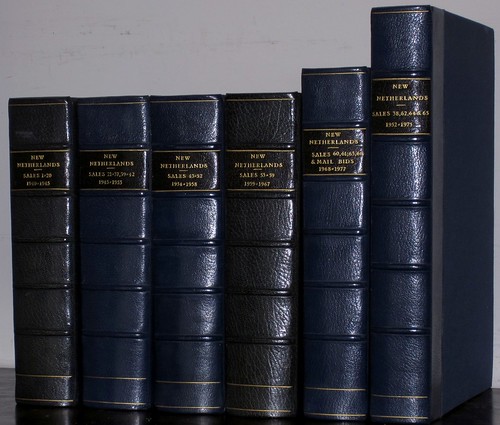 New Netherlands catalogues complete, 6 volumes bound in Morocco
New Netherlands catalogues complete, 6 volumes bound in Morocco
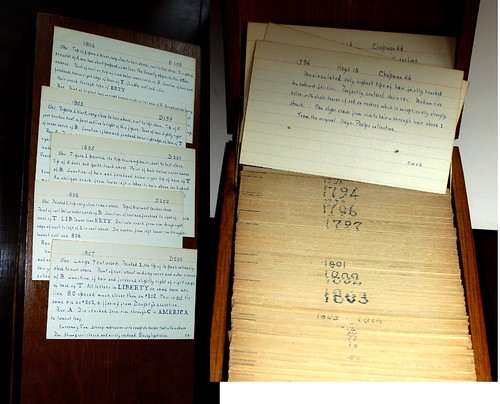
Howard Newcomb’s card file
The catalogue will be posted on our web site October 7 and mailed shortly thereafter Many lots will be displayed at the Whitman Baltimore show November 7-9.
Charles Davis, EAC 142
Box 547
Wenham Mass 01984
E-Mail:
Numislit@aol.com
Web Site:
www.Numisbook.com
BOOK REVIEW: THE MEDALS OF KARL X. GOETZ
Greg Burns writes:
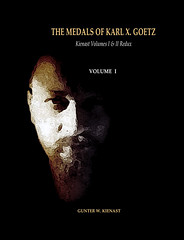 I received my set of Henry Scott Goodman’s republication (soft-bound) of volumes one and two of Gunter Kienast’s books on Karl Goetz’ medals. They were extremely well protected during shipping by a heavy duty box and were well wrapped; they arrived in flawless condition. The covers look gorgeous and the printing is quite good. I’m very happy with them. Definitely a cost-effective alternative to the long out-of-print and hard to find hardbound originals (or even, for bibliophiles, in addition to the hardbound copies). I think the ease and relative low-cost of acquiring these quality issues will open up to purchasers the broad panorama of subjects and themes Goetz covered. Recommended.
I received my set of Henry Scott Goodman’s republication (soft-bound) of volumes one and two of Gunter Kienast’s books on Karl Goetz’ medals. They were extremely well protected during shipping by a heavy duty box and were well wrapped; they arrived in flawless condition. The covers look gorgeous and the printing is quite good. I’m very happy with them. Definitely a cost-effective alternative to the long out-of-print and hard to find hardbound originals (or even, for bibliophiles, in addition to the hardbound copies). I think the ease and relative low-cost of acquiring these quality issues will open up to purchasers the broad panorama of subjects and themes Goetz covered. Recommended.
To read the earlier E-Sylum article, see: NEW BOOKS: THE MEDALS OF KARL X. GOETZ (www.coinbooks.org/esylum_v16n38a02.html)
THE BOOK BAZARRE
THE JOYS OF BACK ISSUES OF THE NUMISMATIST
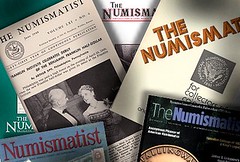 Coin collecting is surprisingly dynamic. And coin lore, like coin value, changes over time. Facts change, and commonly known tidbits are lost to time.
Coin collecting is surprisingly dynamic. And coin lore, like coin value, changes over time. Facts change, and commonly known tidbits are lost to time.
Hubert and I comb relentlessly through old books and magazines, and auction catalogs. We do this to learn not just the stories behind the coins, but also the stories behind the stories. Books are great for that, sure, and a good catalog is a masterful blend of the technical and the legendary. However, for our money (literally, and not a lot of it*), old magazines are where it’s at.
Individual issues are snapshots of the hobby as it was at the time of publication, and are full of insights that can only help you as a collector. They have the power to transform your collecting goals and lead you in new and exciting directions. Taken as a whole, a year’s or even a decade’s worth of magazines puts you in the middle of the action, and the hobby of the past becomes a living thing once more.
February 1986
"(Herb) Hicks’ work is the cornerstone of Washington quarter reverse variety study, and his in-depth feature “The Washington Quarter Reverse: A Die-Variety Bonanza” is a mesmerizing take on the subject.
So groundbreaking is the article that it remains essential reading on the Heraldic Eagle-type Washington quarter reverse, and is often quoted by Q. David Bowers and others when describing the different reverse hub changes that have occurred throughout the series."
July 2002
The story of the 1933 double eagle is one of the great tales of 20th century numismatics. The month that the only example the Federal Government ever allowed to be privately owned went on sale, The Numismatist published an insightful and captivating piece by Stack’s cataloger and former Numismatic Literary Guild Executive Director David T. Alexander entitled “Selling America’s Rarest Coin”.
Alexander covers all the bases, from the production and subsequent melting of the ‘33 double eagle, to attempts to sell the coins over the years – including the Flanagan, Berenstein, Boyd, Bell, Reed and Eliasberg specimens. The Reed specimen was actually advertised by Smith & Sons, a Chicago coin dealership, in the February 1941 issue.
July 1984
James O. Sweeny’s essay “The Liberty Cap: Numismatic Symbol Sans Pareil” should be required reading for every coin collector. Strangely enough, Hubert and I have a long-running conversation going (Hubert: Debate? Argument? Bar-room bull session?) about the differences between the Phrygian cap and the Roman pileus. It’s what we do. The two hats are decidedly different in origin and use and are commonly confused for one another. In Sweeny’s piece, you find an illuminating history of the pileus and its symbolism, going back to the Denarius of Cassius in the 2nd century B.C.E. and progressing through the modern era.
March 1985
We talked about William Hyder before during our coverage of the 2013 ANA Board of Governors elections. In a March 1985 piece entitled “The Selling of the Stone Mountain Half Dollar” Hyder and coauthor R. W. Colbert wrote one of the best essays ever about a U.S. commemorative coin.
The piece traces the coin’s origin back to attempts to construct a monolithic sculpture of Jefferson Davis, Robert E. Lee and Stonewall Jackson on the side of Stone Mountain in Georgia. Plans for the work go as far back as 1912. The coin wasn’t issued until 1925, and the actual sculpture wasn’t finished until 1972, after fits and starts and heaps of controversy.
Of all the “shenanigans associated with the issuance of [commemorative] half dollars”, Hyder and Colbert point out, “none is more mysterious than the variety of schemes devised to sell the Stone Mountain half dollar”.
To read the complete article, see: From the Vaults: Four Essential Back Issues of The Numismatist (www.coinweek.com/education/vaults-four-essential-back-issues-numismatist/)
EL SITIO NO. 8 PUBLISHED
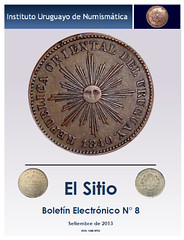 “El Sitio” Nº 8 contains some interesting news such as the ceremony commemorating the 58 years of the Instituto Uruguayo de Numismática (IUN), four numismatic articles, and a note on an exposition. The cover has a picture of the famous and very scarce so called “cinquiño”, the 5 centésimos coin of year 1840.
“El Sitio” Nº 8 contains some interesting news such as the ceremony commemorating the 58 years of the Instituto Uruguayo de Numismática (IUN), four numismatic articles, and a note on an exposition. The cover has a picture of the famous and very scarce so called “cinquiño”, the 5 centésimos coin of year 1840.
The four published articles are the following:
- The Medal School Prizes from the School of the Philantropy Society, by Hugo Mancebo Decaux.
- The proof Peso del Sitio, by Gustavo O.Pigurina.
- The 97 Revolution and the Festival of Trees, by Daniel Fernández Calvo.
- Identifying Sheep Shearing Tokens (second printed delivery), by Horacio Morero and Mario Sánchez.
The exposition: “The Jellyfish in the Greek Cities State Coins”.
To read the complete issue on the web, see: http://www.monedasuruguay.com/bib/bib/sitio08.pdf

JAMES CHARLTON, 1911-2013
Don Bunjevac, President, Toronto Coin Club writes:
I am sorry to have to advise that Jim Charlton died. Mr. Charlton was a great figure in Canadian numismatics, and was charter member #9 of the Toronto Coin Club. He lived a long and active life, and was an inspiration to all who knew him.
Tony Hine writes:
Jim Charlton, long time coin dealer and expert and wooden nickel collector died earlier this week. Judy Blackman has provided us with the attached tribute. Jim turned 100 in July 2011 and attended the wooden money meeting in Windsor. Jim chose to have breakfast with the wooden money collectors rather than join one of several other meetings occurring at the same time.
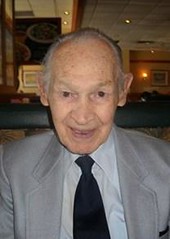 James Edward Charlton (July 26, 1911 – September 20, 2013) “Coinman to Canadians” passed away peacefully on Friday, September 20th, 2013 in his 103rd year. James, beloved husband of 68 years to Mary (nee Tyndall), was loving father of James. R. Charlton (married to Pamela), and dear Grandpa of Daniel, Trevor (married to Christa), and Great-Grandpa to Lucas, Dexter and Lillyana.
James Edward Charlton (July 26, 1911 – September 20, 2013) “Coinman to Canadians” passed away peacefully on Friday, September 20th, 2013 in his 103rd year. James, beloved husband of 68 years to Mary (nee Tyndall), was loving father of James. R. Charlton (married to Pamela), and dear Grandpa of Daniel, Trevor (married to Christa), and Great-Grandpa to Lucas, Dexter and Lillyana.
“James will be dearly missed by members of the numismatic hobby and publishing industry. Scott Douglas shared, “Jim was the epitome of honesty and integrity. Jim Charlton is a numismatic legend. His legacy will live on in all who knew him.” Sean Isaacs shared, “A quiet giant of numismatics, whose contributions to the wonder of coin collecting will leave a permanent legacy. We will indeed miss his wonderful presence at our shows. Sincere condolences to his family.”
James was a Canadian coin dealer and numismatic publisher, and an all around lovely human being. After working as a stationary engineer, he opened a coin store in Toronto. He published his first guidebook, Catalogue of Canadian Coins, Tokens & Fractional Currency, in 1952. Other titles from Charlton Press followed.
Subsequently James sold his store to concentrate on his publications, and later sold his publishing company, Charlton Press, which continues to publish price guides for coins, banknotes and other collectibles.
In 1972, James was recipient of the J. Douglas Ferguson Award for his distinguished services to Canadian numismatics. “As a professional coin dealer for over twenty years, you established a reputation for honesty and integrity that greatly added to the prestige of Canadian numismatics at home and abroad. Your influence was always a steadying factor on the commercial side of our hobby.
Your catalogues of Canadian coins, tokens and paper money have become the accepted standard throughout the world. Such expressions as ‘Charlton's numbers’, ‘Charlton's prices’ and ‘Charlton's grading’ are understood by numismatists everywhere. The publication of your annua1 catalogues has contributed more during the past two decades to the in-creased interest in numismatics as a popular hobby in Canada than any other single factor.
Through your many articles and numerous speeches you have shared your interest and enthusiasm for numismatics with thousands of others. You have always stood for and encouraged the finer aspects of our wonderful hobby. We are proud to present the highest award of The Canadian Numismatic Association to you, James E. Char1ton, for your outstanding contributions to Canadian numismatics.” (signed: Norman W. Williams and Jenny Zubick)
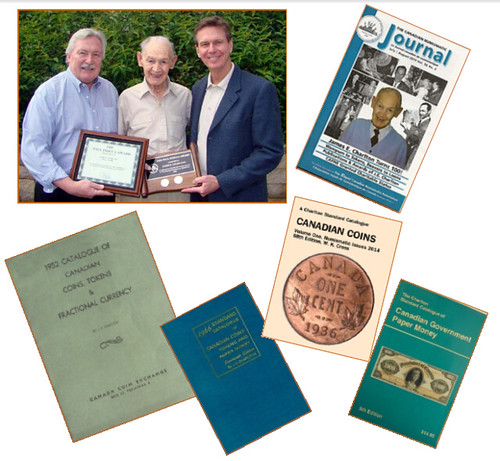
Scott E. Douglas forwarded a copy of a letter he sent out to the Fellows of the Canadian Numismatic Research Society (CNRS). Thanks.
It is with deep sorrow that I report the passing of Canada’s greatest numismatic ambassador, Fellow Jim Charlton, at 102 years of age. For me to try and recap Jim’s accomplishments here would take forever that’s how extensive they are. Suffice to say that there is scarcely a collector in Canada and many other parts of the world that has not heard of the Charlton name. Jim always represented himself with dignity, honesty and integrity.
I am quite certain there are many, many stories you all have of Jim’s generosity. In my case, on more than one occasion, Jim sent me a letter commenting on whatever article I may have written in the CN Journal or Numismatica Canada. He was always complimentary in expressing how interesting or informative the piece was. I always felt his sincerity and appreciated that he would take the time to show his support.
On another occasion Jim sent me some old invoices and statements from the Hamilton Stamp and Stencil Works dated in the 1890’s when he found out I was researching the company for a future article. I know my story is not unique and would encourage everyone to take a moment now to reflect on how Jim may have touched your life.
Jim Charlton is a numismatic legend. His legacy will live on in all who knew him.

Darryl Atchison writes:
This was very sad news for me as I first met Jim Charlton when I was about 18 years old back in 1982. I had just been posted to a base in Toronto and took the opportunity to get an introduction to large 'coin shows' and very large, active coin clubs. At that time, Jim was still living in the Toronto area and I would see him regularly. He sparked my interest in numismatic research and displaying and over the years I have added many coin publications to my library that I couldn't imagine how I would have found otherwise.
He was a gentle, soft-spoken man who exuded charm and grace and he was a genuine pleasure to sit down with and chat about coins and other things that interested him. It cannot be overstated how large the gap in Canadian numismatics will be now that our most famous 'ambassador' has left us. He will be sorely missed and fondly remembered for many, many years.
Dan Gosling writes:
Mr. Charlton lived life to the fullest. He dedicated himself to the benefit of those around him and others as well. He was hard working and highly successful in business and yet maintained the highest moral and ethical standards.
His biography, J. E. Charlton : Coinman to Canadians by H. Don Allen,
is a must-read for all numismatists. The book details events relating to the
numismatic community during an important time period. There is an
excellent article “James E. Charlton Reflects on the Changing Numismatic
Scene” in the June, 1998, issue of the North York Coin Club Bulletin
www.nunet.ca/nycc/bulletins/NYCC.1998-06.pdf
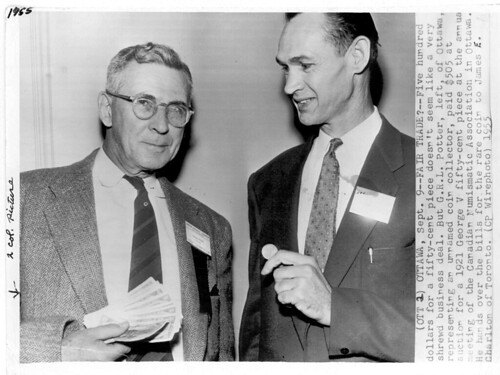
The James E. Charlton Junior Award, www.rcna.ca/charlton.php, was established in 1969 as an annual presentation for the best exhibit of Canadian coins displayed by a Junior member (under 18 years of age) at the Canadian Numismatic Association (CNA) Convention. As a great believer in the importance of encouraging young people to take an interest in our hobby he created an award to acknowledge excellence in exhibits.
James E. Charlton, F.R.C.N.A., F.C.N.R.S., Honourary President of The Royal Canadian Numismatic Association (RCNA), and Life Member 6, is often referred to as the “Dean of Canadian Numismatics,” and the “Father of modern numismatics in Canada.”
James E. Charlton was Editor of the Canadian Section of Coin World (1963-1969, 1983-1990); president of the RCNA (1979-1981); recipient of the Royal Canadian Mint Numismatic Education Award (1988); recipient of the Numismatic News Numismatic Ambassador Award (2001); appointed Fellow of the CNA (2002); first recipient of the Paul Fiocca Award (2008), the highest award of the RCNA; and attended 51 consecutive CNA Conventions (1954-2004).
“The Charlton Coin Catalogue and its creator James E. Charlton” is featured at
www.edmontoncoinclub.com/charlton.htm.
The October issue of The Canadian Numismatic Journal features an article
“Canada's Coinman: Continuing Commitment” by Harold Don Allen and
“Reflections of My Father” by James R. Charlton. RCNA members can view
this issue now by logging into The CN Journal Online at:
www.rcna.ca/cnjournal.php
Getting to know Mr. Charlton was the singular greatest joy of my numismatic hobby.
When I called Jim on his 102nd birthday on July 26th he reported that he was doing tres bien! His son remarked that his father never spoke a single word of French prior to turning 100.
Farewell Mr. Charlton, you lived your life well. You served our hobby and taught our enthusiasts – a job you did better than anyone I know.
Scott Douglas added (on Saturday):
The funeral service was small and private but very touching. A few of us were able to trade 'Charlton tales' if you will, and the laughter was a tribute to a wonderful individual that left all who knew Jim a better and more enriched person. The trip to the cemetery was an intimate occurrence and I am thankful to the Charlton family for allowing me to be a part of it. I will not soon forget today.
To read the complete obituary, see: James Edward Charlton (obits.dignitymemorial.com/dignity-memorial/obituary.aspx?n=James-Charlton&lc=3778&pid=167164731&mid=5679324)
U.S. Coin Cataloger Needed
The successful applicant will work at our World Headquarters in Dallas or from home (substantial numismatic library required). Excellent benefits and work environment. Salary will be commensurate with skills and experience. Contact Mark Van Winkle at Mark@ha.com.
NOTES FROM E-SYLUM READERS: SEPTEMBER 29, 2013
Dollar Piece or Peace Dollar?
Bob Neale writes:
In the notice of Baldwin's sale of the Arielle collection, shown is a Sierra Leone 1791 proof dollar with the legend "ONE DOLLAR PIECE" and the clasped hands symbol for 'peace.' I wonder whether 'piece' was meant to be spelled as it is? No, I haven't made any effort to find out. Yes, lazy...
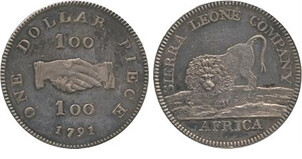
To read the earlier E-Sylum article, see: BALDWIN'S ARIELLE COLLECTION OF BRITISH COLONIAL COINS (www.coinbooks.org/esylum_v16n39a23.html)
National Coin Album Roman Coin Pages
Dave lange writes:
 Of interest last week were the photos supplied by Larry Korchnack of the National Coin Album pages for Roman coins,
Publisher Numbers 500A through 500F and Lange Numbers RNSRA1 through RNSRA6. I was aware of these from vintage ads
in The Coin Collector's Journal, and David Sundman also has a set of them. I was hoping to photograph David's
pages for my book, but this never quite came together, and Larry's photos arrived after the color pages were already
laid out fully. The Roman pages were offered for a very short time in the mid-1930s and were not good sellers, being
discontinued before the end of that decade.
Of interest last week were the photos supplied by Larry Korchnack of the National Coin Album pages for Roman coins,
Publisher Numbers 500A through 500F and Lange Numbers RNSRA1 through RNSRA6. I was aware of these from vintage ads
in The Coin Collector's Journal, and David Sundman also has a set of them. I was hoping to photograph David's
pages for my book, but this never quite came together, and Larry's photos arrived after the color pages were already
laid out fully. The Roman pages were offered for a very short time in the mid-1930s and were not good sellers, being
discontinued before the end of that decade.
Even more rare are the National pages for English copper coins by type from James I through George V. These were offered only in the large or portrait format pages, Lange Numbers RNLE1 and RNLE2 (the Publisher Numbers are unknown). I was not able to find even a single example of either of these pages, so they too must have been flops for Wayte Raymond. They were offered concurrently with the Roman pages, and I'm attaching a page from my book which shows the ads for both.
To read the earlier E-Sylum article, see: QUERY: NATIONAL COIN ALBUM ROMAN COIN PAGES SOUGHT (www.coinbooks.org/esylum_v16n39a10.html)
Fort McHenry and Fire Museum of Maryland Exhibits
Regarding the quarter launch ceremony at Fort McHenry in Baltimore,
Russ Sears writes:
Jane and I arrived there at about 10:30 but our purpose was to see an exhibit which includes over 30 pieces from our collection. As a second thought I purchased two rolls of quarters.
The current exhibit at Fort McHenry focuses on anniversary celebrations of the Star Spangled Banner in 1889, 1914 and 1964. The room where it is located is just past the ranger station on the left. Most people likely assume that they cannot or should not enter the room. Next year the focus will be more on the actual Battle of Baltimore in 1814.
At this time, we also have two different exhibits at the Fire Museum of Maryland. One has to do with the Fire Department in the early 1870's and 1880's. The other features the Battle of Baltimore and related items including document signed by Admiral Cochrane, Admiral Cockburn, Major General Ross, all British leaders of the attack. Other documents are signed by Major General Samuel Smith, military leader of the defense, Major George Armistead, commander at Fort McHenry and James McHenry (they named a fort after him), and other pieces.
To read the earlier E-Sylum article, see: FORT MCHENRY QUARTER LAUNCH CEREMONY REPORT (www.coinbooks.org/esylum_v16n39a13.html)
Smithsonian Exhibit Suggestions
Martin Kaplan writes:
Coins to include in the Smithsonian exhibit: the first and last U.S. $20 gold pieces...not for circulation...1849 and 1933.
Eric Schena writes:
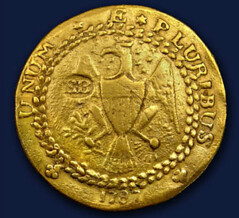 I am going to pick one item and it's a coin. I would think in order to tell the story of the value of money, you could not go wrong with a Brasher doubloon. Firstly, it's the first American gold coin, it is an excellent draw for people, the design is original and inspiring, and it is a suitably big enough coin that it would be able to be seen easily without too many visual aids. An added thought is that it cannot only tell the story of how money circulated in the early Republic (the bridge between foreign circulating coins and early US coinage), but also the story of American numismatics itself.
I am going to pick one item and it's a coin. I would think in order to tell the story of the value of money, you could not go wrong with a Brasher doubloon. Firstly, it's the first American gold coin, it is an excellent draw for people, the design is original and inspiring, and it is a suitably big enough coin that it would be able to be seen easily without too many visual aids. An added thought is that it cannot only tell the story of how money circulated in the early Republic (the bridge between foreign circulating coins and early US coinage), but also the story of American numismatics itself.
The coins have storied pedigrees that spans the history of coin collecting in the US, plus have even bridged the gap into popular culture, to include the movies (The Brasher Doubloon, 1947) and it does not get much more American than Hollywood. In addition, it can be used to discuss trade in the 1780s and 1790s, as well as the value of the coin itself as an objet d'art. That would be an excellent way to broach multiple subjects in one object and not restrict it to just numismatic arcana.
To read the earlier E-Sylum article, see: QUERY: INPUT FOR NEW SMITHSONIAN NUMISMATIC EXHIBIT SOUGHT (www.coinbooks.org/esylum_v16n39a11.html)

ARTICLE INTERVIEWS RED BOOK EDITOR KEN BRESSETT
Q: Ken, how long have you been involved with the Red Book? A. I began sharing numismatic information with Dick Yeoman in 1956, and did it out of friendship and concern for the accuracy in the book. In 1959, he asked me to move to Racine, WI and work for him full time on this and other projects.
Q: How has the process of pricing changed since you began work on the Red Book? A: The basic process is the same in that we still survey key US dealers and average their opinions to gain an insight into current price trends. In the early days we did the calculations without use of computers or even adding machines. Today the system is far more refined and computers do much of the work for us. The final numbers still require human analysis and consideration of factors that machines simply cannot supply.
Q: We are most familiar with your work regarding United States coins. What other areas of numismatics interest you? A: I enjoy all aspects of numismatics, but have refrained from actually collecting US coins to avoid any appearance of a conflict of interest. I collect coins of China and Japan because they are so challenging, and ancient Greek silver coins because they are historical and beautiful.
Q: Who is the most interesting person you have met in your years of numismatics? A: Eric P. Newman. I recently attended a party for him on his 102 birthday. He regaled me with stories from his past and the many enjoyable times we spent together. His incredible memory and life experiences are astounding, and extend far beyond what most people only know about his numismatic activities. He is truly a modern Man for All Seasons, and a great humanitarian.
To read the complete article, see: TEN QUESTIONS (www.ngccoin.com/news/viewarticle.aspx?IDArticle=3593&Ten-Questions)
FORBES LIFE HIGHLIGHTS NEWMAN COLLECTION
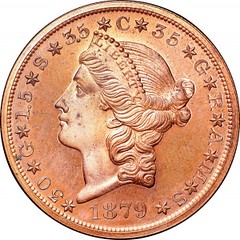 In the late 1800s, eons before the euro was even a gleam in a Brussels economist’s eye, several European countries forged an international monetary standard that the United States considered joining. The U.S. Mint went as far as to design new gold and silver coins to match the weight of those in Italy and France, and even invented a new denomination, the Stella, with a face value of $4. Yet adoption of this Esperanto of currency was soundly defeated by American isolationists, and only a few prototype coins (or “patterns”) remain. Some of the finest were acquired in the 1930s and ’40s by a man named Eric P. Newman.
In the late 1800s, eons before the euro was even a gleam in a Brussels economist’s eye, several European countries forged an international monetary standard that the United States considered joining. The U.S. Mint went as far as to design new gold and silver coins to match the weight of those in Italy and France, and even invented a new denomination, the Stella, with a face value of $4. Yet adoption of this Esperanto of currency was soundly defeated by American isolationists, and only a few prototype coins (or “patterns”) remain. Some of the finest were acquired in the 1930s and ’40s by a man named Eric P. Newman.
Now those patterns are back in circulation–among collectors, anyway–having been sold in April by Heritage Auctions. Their value has skyrocketed: an 1879 “metric dollar” that Newman bought for $35 fetched $41,000; another from 1880, for which Newman paid $50, sold for $47,000. “Eric was way ahead of his time,” says Heritage cochairman Jim Halperin. “He’s a brilliant, brilliant man.”
Yes, is brilliant: Newman, now 102 years old, not only had a great eye for valuable coins; he also played a major role in gathering the numismatic knowledge that got fellow collectors interested. “Fifty years ago, there were no databases,” Halperin explains. “You pretty much had to memorize things. Eric remembered.”
On November 15 and 16, another portion of Newman’s vast holdings will go on the block at Heritage, with some of the most pristine early federal coinage among the 1,800 lots on offer. Highlights include a 1795 small eagle silver dollar valued at $650,000 and a 1796 quarter dollar valued at $800,000, both considered the finest such specimens in existence. The sale is expected to total more than $15 million.
As with the patterns, these lots will surely go for orders of magnitude more than Newman paid. From his first purchase in 1921, when he was just 10 years old, Newman simply traded on what he knew. “My guess is that he made one of the greatest investments ever,” says Halperin. If only the architects of the euro had been so wise.
Nick adds:
The magazine has a huge super-detailed image of the 1796 bust half dollar. The layout is impressive, and then four other auctions are mentioned.
To read the complete article, see: Never-Used Federal Coin Sale To Total Estimated $15 Million (www.forbes.com/sites/jonathonkeats/2013/09/05/never-used-federal-coin-sale-to-total-estimated-15-million/)
FRICK SEMINAR ON DAVID D’ANGERS' PORTRAIT MEDALLIONS
Frick Collection is pleased to offer The Romantic Medallion: Collecting David d’Angers’s Portraits, a seminar led by Emerson Bowyer, guest curator, and Jonathan Kagan, collector, on Tuesday, October 29, from 6:00 to 7:30 p.m. We hope you will consider joining us for what promises to be a riveting exploration of portrait medallions from Mr. Kagan’s private collection and the Frick’s special exhibition, David d’Angers: Making the Modern Monument.
David d’Angers is often credited with the nineteenth-century revival of cast bronze portrait medallions. By the end of his life, the sculptor had created an immensely popular portable pantheon of some five hundred medallions depicting the celebrities of his day, from Géricault and Goethe to George Sand and Paganini. This seminar will introduce these objects and discuss their creation, reproduction, and distribution. It will also offer the rare opportunity to examine a group of medallions from a New York private collection and to consider issues related to connoisseurship and collecting.
To reserve a space in this seminar, please visit our Web site, e-mail seminars@frick.org, or call 212-547-0704.
We hope to see you at the Frick!
The Frick Collection
1 East 70th Street
New York, New York 10021
www.frick.org/seminars
Dick adds:
I hope this results in a published work.
THE BOOK BAZARRE
WHAT PRICE GLORY? MEDALS OF HONOR AUCTION RECORDS
What Price Glory? No, this is not a 1952 Jimmy Cagney comedy. This is an analysis of Victoria Cross and Medal of Honor medals auctioned off November 10. 1988. The venue was Sotheby's, London. The auction codename was "SCRAMBLE!" The exchange rate was $1.89 to the pound.
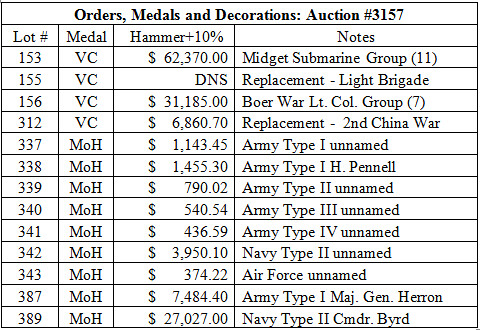
Twenty-five years ago the value of these medals was dependent on the recipient and the story of heroism his medals told. Since Medals of Honor could not be sold legally in the US, the London market was the venue of choice. In this auction the Medals of Honor outnumbered the Victoria Crosses by more than two to one. The unnamed US medals went for small prices and probably went to type collectors. The exception to that was the Navy Type II Tiffany Cross which is rare by any definition.
There was thought that the medals and awards of Admiral Richard E. Byrd were consigned to Sotheby's in London so that his Medal of Honor could be sold. That is not stated here as fact but was certainly a contributing factor. The total Byrd consignment came to 90 lots. It was sold by the estate of Marie A. Byrd, the Admiral's widow. The real irony was that just one month before the sale the son of Admiral Byrd, Richard E. Byrd, Jr., was discovered dead in an empty warehouse in Baltimore where he had been living rough for some weeks. At the time the family had no explanation for what happened.
To read the earlier E-Sylum article, see: MORE ON THE VALUE OF A MEDAL OF HONOR (www.coinbooks.org/esylum_v16n39a14.html)
RIDDELL AND PATTERSON: A CURIOUS CONNECTION
 I sent a manuscript to The NumismatistOrrin Lindsay’s Plan of Aerial Navigation here:
www.forgottenfutures.co.uk/lindsay/moon.htm
.
It also is archived on JSTOR.
I sent a manuscript to The NumismatistOrrin Lindsay’s Plan of Aerial Navigation here:
www.forgottenfutures.co.uk/lindsay/moon.htm
.
It also is archived on JSTOR.
Starting in 1832, Riddell sold subscriptions to his collections of plants, largely gathered in Ohio. Apothecaries and scientists (both professional and amateur) were the customers. Educated people of the time were passionate about their collecting cabinets. Among his correspondents was Dr. Robert Maskell Patterson, Director of the Mint at Philadelphia. Patterson had been a professor of mathematics, chemistry, and natural philosophy at the University of Pennsylvania before teaching natural philosophy at the University of Virginia. Also, coincidentally, both Patterson and Riddell had Amos Eaton for a tutor.
Riddell met Eaton at Rensselaer School (later Rensselaer Polytechnic Institute) in 1827. It was Amos Eaton who granted Riddell both his bachelor’s (1829) and his master’s degrees (1832). Patterson met Eaton 20 years earlier because Patterson’s father was the warden at the New York State Penitentiary at Greenwich Village while Eaton was serving time for forgery.
Riddell was an original owner of one of the four proof Confederate half dollars. In Walter Breen’s Complete Encyclopedia of U.S. and Colonial Coins the entry for coin 8000 calls him “Biddle.” In Q. David Bowers’ The History of United States Coinage as Illustrated by the Garrett Collection he is named “Professor Biddle” quoting a letter from Dr. B. F Taylor, coiner for the Confederate States (pp 412-413). Memories fail - Biddle for Riddell - but it is also possible that Taylor was withholding information. The letter also claimed that the fourth coin went to “a Confederate officer of this city” when, in fact, it went to Jefferson Davis.
The official U.S. Mint website (www.usmint.gov) has no information about John Leonard Riddell. Riddell does not appear in standard numismatic references such as The U.S. Mint and Coinage by Don Taxay or the Coin World Almanac. A biography appears in A Long Ride in Texas: the Explorations of John Leonard Riddell by James O. Breeden (Texas A & M University Press: 1994). In that book, Riddell’s decade at the Mint earned one deprecatory paragraph. The best summary of Riddell’s life appeared in Tulane Studies in Geology and Paleontology, Volume 13, Numbers 1-2, September 1, 1977, which was also titled Special Papers on the History of Science, Number 1; “John Leonard Riddell” by Karlem Riess.
It can be found online at www.tulane.edu/~matas/historical/docs/Riddell_LD_5427_T822.pdf
To read the earlier E-Sylum article, see: FROM TEXAS TO THE MOON WITH JOHN LEONARD RIDDELL (www.coinbooks.org/esylum_v15n21a14.html)
FIREHOUSE FIRE NEAR PHILADELPHIA MINT
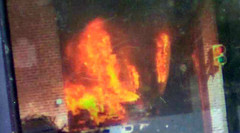 Flames engulfed a Philadelphia firehouse after an ambulance parked inside the garage ignited.
Flames engulfed a Philadelphia firehouse after an ambulance parked inside the garage ignited.
The ambulance caught fire inside Ladder 2 at 4th and Arch Streets in the Old City section of the city around 11:30 a.m. on Friday, fire officials say.
Fire Commissioner Lloyd Ayers said that firefighters and fire trucks were out on a training exercise when the blaze broke out. Once they returned, officials say the crews were able to douse the flames in 10 minutes.
Witnesses caught explosions coming from inside the firehouse as the blaze burned on cell phone video.
"I looked down and I seen smoke coming out of the firehouse, which is kind of odd because usually, you know, they're going to the fire, not the other way around," Ted Gutkowski said.
The firehouse, which was also home to Engine 8, was destroyed by the fire. The fire company is better known as the "Ben Franklin" house due to its placement in historic Philadelphia.
While firefighters were able to knock down the flames shortly after arriving back to the firehouse.
To read the complete article, see: Philly Firehouse Catches Fire After Ambulance Ignites (www.nbcphiladelphia.com/news/breaking/Firehouse-Fire-Old-City-225517712.html)
THE BOOK BAZARRE
HARVEY STACK ON THE JAMES STACK COLLECTION, PART 1
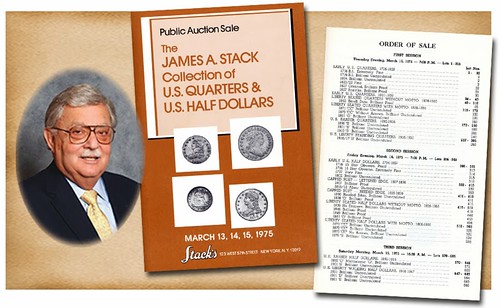
In March of 1975 Stack's had the pleasure of offering for sale the outstanding collection of United States quarters and half dollars formed by James A. Stack as part of his noteworthy collection of United States coins.
Of course, the question we were always asked was if James A. Stack was part of the Stack family. He wasn't; it was pure coincidence. Nevertheless the friendship between the Stack family and James Stack was certainly close, and many were amazed that such a relationship could exist between a collector and dealers.
This friendship started as Jim came to appreciate the way the Stack brothers treated clients. In the nearly four decades they dealt together it became almost as if he was family to Joseph and Morton. James A. Stack was a widower at an early age, and had taken up residence at the Roosevelt Hotel in New York, which was just a short walk from Stack's, then located on 46th Street. This made it easy for him to stop in, visit, and see "what's new?"
As was evident in his collection of quarters and half dollars he was willing to search the country to acquire many of the rarities. He appointed Stack's as his agent and together we found many of the rarest and choicest specimens.
James A. Stack was able to acquire specimens from the noteworthy Neil, Atwater, Dunham, Hall and Col. Green collections, all of which were sold in the 1940s.
James A Stack was not only a person who assembled sets of dates and mints, going for completeness, but he also understood die states and varieties. From the day he started he knew that there was more to the hobby of coin collecting than being familiar with price trends when and if they were published. His collection of coins proved his love of collecting and his appreciation of the beauty of coins.
To read the complete article, see: Remember When: The James A. Stack Collection, Part 1 (stacksbowers.com/Blogs/remember-when-james-stack-collection.html)
SPINNERET MACHINES IN NUMISMATICS
David Lange writes:
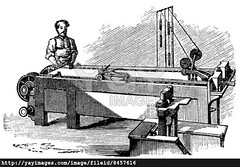 I don't know what a spinneret is in the context of numismatics, but the illustration that came up during your search is clearly a 19th Century draw bench. This machine was used to make final adjustments to the thickness of planchet strips and even their surfaces before the blanks were punched from them. It is of the type used at the U. S. Mint during mid-century, as it shows the suspended weights which returned the carriage to its starting place. This was an innovation devised by Franklin Peale, according to Roger Burdette's book From Mine to Mint.
I don't know what a spinneret is in the context of numismatics, but the illustration that came up during your search is clearly a 19th Century draw bench. This machine was used to make final adjustments to the thickness of planchet strips and even their surfaces before the blanks were punched from them. It is of the type used at the U. S. Mint during mid-century, as it shows the suspended weights which returned the carriage to its starting place. This was an innovation devised by Franklin Peale, according to Roger Burdette's book From Mine to Mint.
Steve Bishop writes:
I don't know what spinnerets have to do with the 1804 dollar or even coins in general, but I thought I recognized the term, so I did a quick patent search, which confirmed my initial guess. Spinnerets are used for forming filaments from viscid or viscous substances such as cellulose, by forcing of the material under pressure through one or more openings or capillary pores in the spinneret. They are used now to produce various threads and filaments out of plastic or carbon (for carbon fiber composites), but I suppose in the early nineteenth century they were used to turn cellulose into artificial silk.
Robert Wimbrow writes:
A spinneret is the extrusion component used by the textile industry in manufacturing synthetic fibers like nylon, rayon, polyester and acrylics. The fibers are produced using the various processes discussed on the following web site: www.fibersource.com/f-tutor/techpag.htm
Nylon was the first fiber of this type that was a commercial success. It was introduced in 1939 as a substitute for silk and was used extensively by the military during World War II in such things as parachutes and clothing.
Current US "paper" money employs small quantities of synthetic fibers. The bills are printed on fabric consisting primarily of a 75%/25% mix of cotton and linen. However, they also have tiny blue and red fibers of various lengths evenly distributed through the fabric as a security feature. These colored fibers were originally made of silk, but were replaced by synthetic fibers some time after nylon was introduced. These colored fibers are probably produced using a spinneret extrusion process.
To read the earlier E-Sylum article, see: QUERY: WHAT IS A SPINNERET MACHINE? (www.coinbooks.org/esylum_v16n39a16.html)
NEW RESEARCH ON THE COIN COLLECTORS KLINE
A. C. Kline and John W. Kline have been thought to be one in the same person since 1876 when E. J. Attinelli published this conflation of personae in Numisgraphics on page 60. The most informative study ever published on this was by George Turner and Herbert A. Trenchard, "John William Kline: America's First Philatelic Author" Philatelic Literature Review, Vol. 42, No. 1, Whole No. 158, 1st Quarter (1993) : 24-41. Four and a half years later Joel J. Orosz published his study The Curious Case of the Coin Collectors Kline (Bowers & Merena Galleries, Inc., August, 1997).
At the current state of the research the identification of A. C. Kline as the wife of John W. Kline is conclusive and seems certain based on interesting anecdotes published in the Philadelphia Inquirer March 21, 1878, which tells the story of John W. Kline, who was arrested in March 1878 because he passed a forged judgment note dated January 12, 1877 purportedly signed by himself and his wife A. C. Kline and witnessed by David C. Wilson, a lad. The note was forged for a $300 loan from Edward V. Lansdale of 52 North 13th Street Philadelphia who later on discovered he was hoodwinked. The verdict in the case was against John W. Kline who was held on $2,500 bail.
Although John W. Kline's wife bears the name A.C. Kline, it does not necessarily defend and support the theory that the coin auctions sold by the name A. C. Kline were those of Mr. & Mrs. John W. Kline. What the court case in 1878 reveals is that John W. Kline was a conniving schemer who practiced duplicity. This opens the question of the possibility of a coincidence of two people who used the initials A.C. Kline both living in Philadelphia.
To read the complete article, see: KLINE, Jr., JOHN WILLIAM (sites.google.com/site/numismaticmallcom/encyclopedic-dictionary-of-numismatic-biographies/kline-john-william)
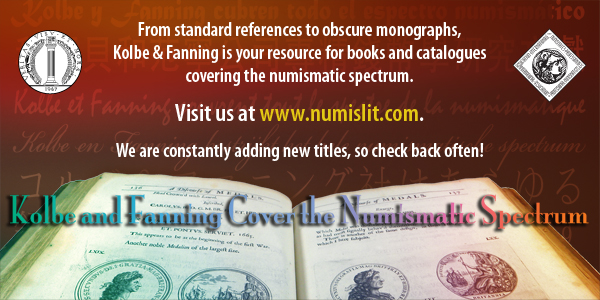
MORE COINS WITH IMAGES OF BOOKS

Dominican Republic 5 Centavos 1877
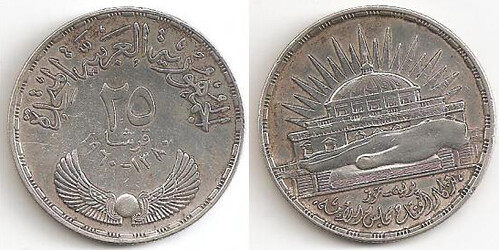
Egypt 20 millemes 1970
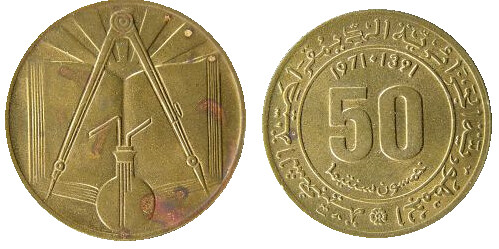
Algeria 50 Santima 1971
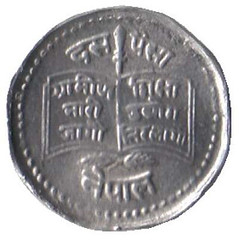
Nepal 10 Paisa 2036
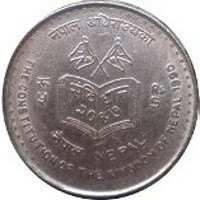
Nepal 5 Rupees 2047
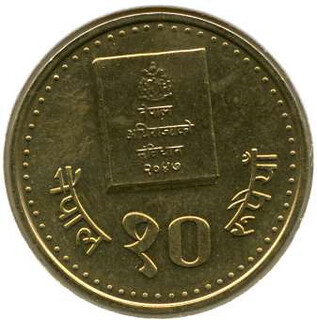
Nepal 10 Rupees 2047

Spain 10 Pesetas
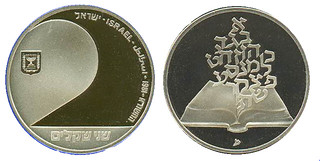
Israel 2 Shequel 1981
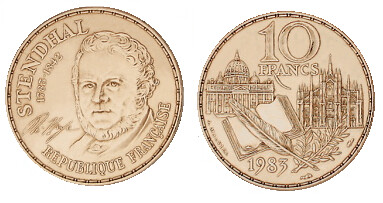
France 10 Franc 1983
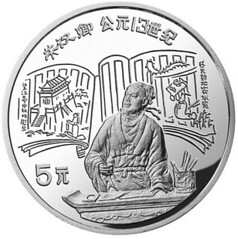
China 5 Yuan 1989
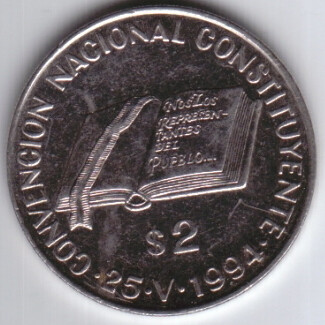
Argentina 2 Pesos 1994
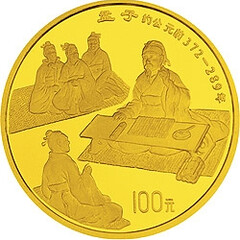
China 100 Yuan 1995
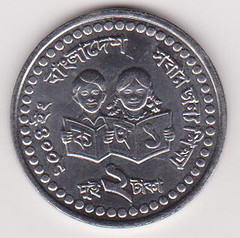
Bangladesh 2 Taka 2004
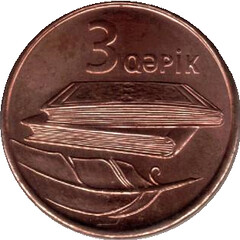
Azerbaijan 3 Qapik 2006
Pabitra adds:
I am working on a monograph on this theme and there are more than 40 coins already in the main manuscript. In addition, I am working on two more themes.
1. Coins depicting coins
2. Composers depicted on coins.
My book "Handbook on Current Circulation Coins of the World" is under print.
Tom DeLorey adds this list of U.S. coins picturing books. Thanks!
1920-21 Pilgrim half
1936 Rhode Island half
2000 Library of Congress dollar
2009 Braille dollar
To read the earlier E-Sylum article, see: NOTES FROM E-SYLUM READERS: SEPTEMBER 22, 2013 : Coins with Images of Books (www.coinbooks.org/esylum_v16n39a09.html)
CHARLEMAGNE, SWITZERLAND, AND NUMISMATICS
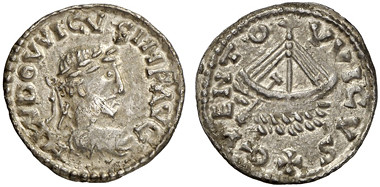
Denarius with the portrait of Charlemagne
Education and coinage – these were the fields where Charlemagne’s deeds have lasted particularly. And in both of them he bet on standardisation. To achieve that everyone who was able to read understood what his emperor wished him to do, Charles established a standardised, easily legible script, known as the Carolingian minuscule.
With regard to the coins it is really unnecessary to repeat another time that the Carolingian coin system with a pound of 20 shillings or 240 denarii had lasted until after World War II. In this matter Charles followed his father Pippin, who had again monopolised for the king the right to issue coins.
In contrast to the bronze statue of Charlemagne this coin on display is genuine, although we must admit that it was not issued in his lifetime but under his son Louis the Pious.
It is a shame that Codex 731 from the St Gall abbey library is not exhibited. The pattern of the wall decoration in the coin section comes from that book. In this ‘Lex Romana Visigothorum’ penned by the clergyman Wandalgarius in Lyon a man is depicted raising a denarius with Charles’s monogram as to show it clearly to all readers.
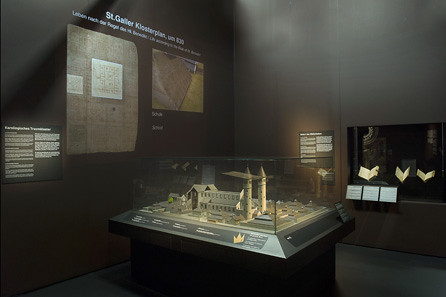
To read the complete article, see: Charlemagne and Switzerland (www.coinsweekly.com/en/News/4?&id=2304)
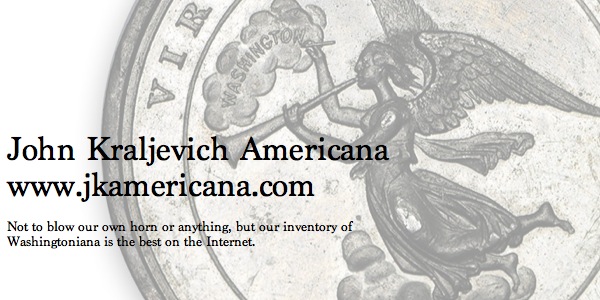
IRELAND’S “GREAT LOCK-OUT OF 1913” CENTENNIAL COIN LAUNCHED
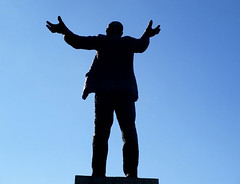 The Central Bank of Ireland have officially launched their latest collector coin on the 24th September marking one of the country’s most pivotal anniversaries, that of the Great Lock-out which occurred one hundred years ago and paved the way for better working conditions for many laborers – not only in Ireland but eventually all around the industrialized world. Attended by many guests from the Irish numismatic & art community – including several previous designers of Irish collector coins, as well as the grand-daughter of Jim Larkin – the proceedings got under way at an unusual but nonetheless very interesting venue in the center of the city.
The Central Bank of Ireland have officially launched their latest collector coin on the 24th September marking one of the country’s most pivotal anniversaries, that of the Great Lock-out which occurred one hundred years ago and paved the way for better working conditions for many laborers – not only in Ireland but eventually all around the industrialized world. Attended by many guests from the Irish numismatic & art community – including several previous designers of Irish collector coins, as well as the grand-daughter of Jim Larkin – the proceedings got under way at an unusual but nonetheless very interesting venue in the center of the city.
Held at one of Dublin’s most historical locations, that of the Glasnevin Cemetery Museum, the cemetery itself being the final resting place of the Lock-out’s organizer, Jim Larkin (1876 – 1947).
Opening the event on the day was John Green, Chairman of the Glasnevin Trust who spoke of the importance of the anniversary, as the protest for better working conditions and its aftermath affected directly those grave-diggers who eventually won the right of one guinea (21 shillings) a week and the right to sick days off when needed. Mr. Green handed proceedings over to the next speaker, The Central Bank of Ireland’s Governor Patrick Honohan.
Mr. Honohan commented on both the significance of the anniversary to the Irish State as well as those historic figures who were involved in the lock-out and the impact it would eventually have in Ireland. The Governor continued, “The story of the lockout, the fascinating personalities involved, the distress and hardship suffered by workers seeking to organize themselves in the early days of broad-based trade unions - All of these things deserve to be known and remembered.” After the Governor’s words, he presented low-numbered strikes of the coins to the Chairman of the Museum’s trust, Mr. Green as well as to the designer of the coin itself, Mr. Rory Breslin.
The coin, while not dedicated specifically to the memory of Jim Larkin, who was instrumental in organizing this historic event, is featured prominently but, not in a manner one would usually think to be utilized. Larkin’s likeness is actually seen from the back, as though one were looking through the symbolic (and in many cases very real) locked gates while Larkin is addressing the masses of crowds who gathered to hear his speeches of encouragement and support for their actions. The coin’s innovative design was created by Irish sculptor Rory Breslin, the Lock-out coin was his first-ever numismatic project.
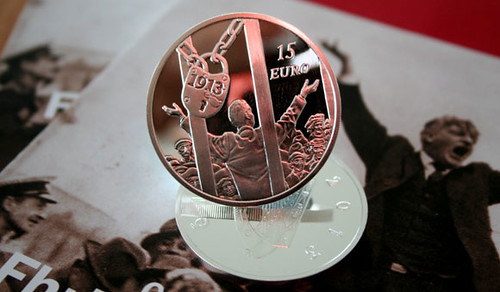
To read the complete article, see: Dublin’s “Great Lock-Out of 1913” Centennial Coin Launched (news.coinupdate.com/dublins-great-lock-out-centennial-coin-launched-2166/)
INTERVIEW WITH LOCK-OUT COIN DESIGN RORY BRESLIN
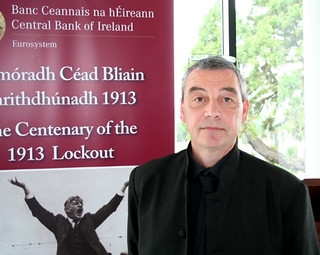 One of Ireland’s most important pre-independence anniversaries was commemorated this week on a new silver coin, the Great “Lock-out of 1913” is the subject for the Central Bank of Ireland’s latest collector coin. Michael Alexander of the London Banknote and Monetary Research Centre attended the launch ceremony and spoke to the designer of this new coin which goes on sale today.
One of Ireland’s most important pre-independence anniversaries was commemorated this week on a new silver coin, the Great “Lock-out of 1913” is the subject for the Central Bank of Ireland’s latest collector coin. Michael Alexander of the London Banknote and Monetary Research Centre attended the launch ceremony and spoke to the designer of this new coin which goes on sale today.
Rory Breslin, studied art at the National College of Art and Design as well as in England, France, the Czech Republic and Slovakia. He co-founded the Head Sculpture gallery in Dublin, and has lectured part-time in the National College of Art and Design. He has had numerous solo drawing and sculpture exhibitions in Ireland and abroad and currently lives in the West of Ireland.
MA: The design for the Lock-out anniversary coin includes an image of Jim Larkin who was so instrumental in the event itself, so much so that a very well-known statue of Larkin located on O’Connell Street in that memorable pose – did it influence you in this coin’s design and how did you come to depict him from the back?
RB: Well, first, the statue is made by Orisin Kelly so that’s a generation up in terms of sculptors from me. The coin itself isn’t specifically for Jim Larkin, its more for the 1913 Lock-out and the whole point of reversing the image is to bring the event back to the people – its them you’re looking at and not necessarily Jim Larkin…
MA: Is your depiction intentionally meant to look at the events before he became such a well-known figure?
RB: No, not necessarily, it’s just a difference of emphasis – it’s about the conditions at the time, the people, the terrible conditions they lived in and the addition of women in the design, you don’t normally see women in the old photographs during the time, it’s mostly depictions of men - the women were normally minding the homes and children. The coin’s design is meant to place more importance on the impoverished community as a whole so here you really just see the addition of Jim Larkin.
MA: Now, as a sculptor who usually works with bronze – have you ever designed a coin before and how did you approach this task of designing something with such detail and realizing that it’s going to have to fit onto a 38 mm surface?
RB: I do work with Bronze – by the ton! And no, I’ve never designed a coin before this commission. In terms of technique, as opposed to making the design for a coin rather than a sculpture, you have to work backwards, you see the piece in your head, you work out all the technical parts out and then, you brush away all of that aside – and then go back and just finish the piece. In some ways, it’s not very different from how I would approach any other commission.
To read the complete article, see: Interview with Rory Breslin, Designer of the “Lock-out 1913″ Collector Coin (news.coinupdate.com/interview-with-rory-breslin-designer-of-the-lock-out-collector-coin-2167/)

Rare U.S. & Worldwide Banknotes, Scripophily and Autographs
“The Copps Collection” of Colonial Stocks, Bonds, Documents & Fiscal Paper to be held in conjunction with the 3rd Annual Wall Street Coin, Currency & Collectibles Show.
Highlights include:
- From “The Copps Collection”, A 1792 U.S. Federal Bond Issued to and Signed by George Washington, this is one of three known, the other two are in an institutions, this is the first time ever at auction
- U.S. Colonial; Obsolete; Fractional; and, Large Type Notes including a high grade “Educational” Set of 3 notes along with dozens of other rare banknotes.
- Worldwide Banknotes including an outstanding U.A.E. Specimen Set as well as hundreds of other rare and desirable notes.
- Hundreds of U.S. & Worldwide Stocks and bonds including autographed certificates and autographs by Daniel Drew; Thomas Edison; Buffalo Bill Cody, Robert Morris and many others.
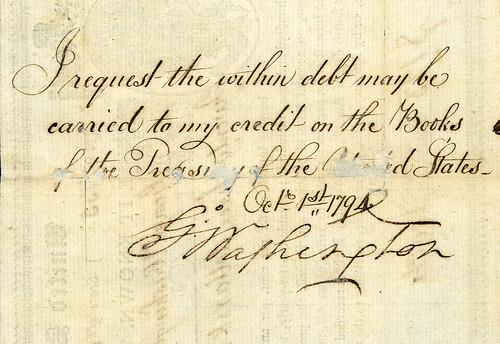
1580 Lemoine Avenue, Suite #7
Fort Lee, NJ 07024
Phone: 201-944-4800
Email: info@archivesinternational.com
WWW.ARCHIVESINTERNATIONAL.COM
CONTROVERSY OVER CHINA'S COIN-SHAPED BUILDING

In what is a strong case of throwing bad money after bad, Guangzhou's municipal government recently awarded 100,000 yuan (HK$126,150) to the winner of a contest to name the city's latest design destination - a one-billion yuan building widely derided as graceless, incongruous and just plain ugly.
When finished, the 33-storey disc-like structure on the southernmost tip of Liwan district on the Pearl River will house the Guangdong Plastics Exchange, among other tenants. With the ribbon-cutting ceremony approaching, officials put to the public the question of what to call it.
The winning entry was "Gungzhou Yuan Building" - yuan means "round" in Putonghua. For 100,000 yuan, residents were entitled to expect something with a bit more zest.
"I'm too exhausted to even complain," wrote one person in an online posting. "Please … even children in kindergarten would be able to come up with such a name."
Some residents have already started to refer to the building as the "copper coin", while others have compared it to a caramel doughnut - one with a hole 47 metres wide.
Six proposals were received when the project was tendered in 2008. One imitated the shape of a sailing boat, so perhaps it could have been worse.
In the end, a design by Joseph Dipasquale was chosen in 2009. Dipasquale is an adjunct professor at the Polytechnic of Milan, and the chairman of AM Progetti, an architectural firm based in the Italian city but with offices in China.
According to the Yangcheng Evening News, the building's original design called for blue glass to be used on the external walls. But that colour was deemed outdated in Guangdong and authorities switched to a gold hue instead, hence the "copper coin".
"Maybe the yellow lighting on the building has been deemed too shiny, but our design was in fact for a jade disc," said the project's leading engineer, Wang Zhanshan.
Reportedly, the disc that Wang refers to was a near-flawless one which was found in an ancient imperial tomb belonging to the Han dynasty (206BC-AD220) and unearthed in Guangzhou.
Initially, construction cost was a concern, but once officials latched onto the project as the city's next big landmark, questions over budget evaporated.
The project was soon being listed as one of the 10 new key developments for the province and had the full support of the municipal government.
"It's not like we can build anything we want," Wang said. "We must get government approval before going ahead. We have consulted the Guangzhou urban planning authorities and there was no strong objection from the panel of experts," he said.
However, Tang Guohua , a professor who specialises in ancient architecture at Guangzhou University, debated the design rationale.
"Jade is normally small in size and the building is huge. From the perspective of an ordinary citizen, it is hard to associate the structure with a jade disc, and most people will think it looks like an old coin," Tang told the Yangcheng Evening News.
The building's height was also inappropriate for its location by the river, he said, adding the shape would affect fung shui.
Hu Gang , an economics professor at Jinan University, said the building was strange looking and out of harmony with the environment.
"But I believe the weirdness of it could help boost local tourism," Hu said.
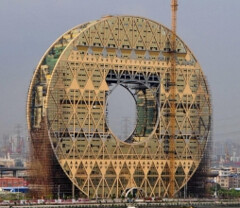

To read the complete article, see: Throwing bad money after bad, China's coin-shaped building (www.scmp.com/news/china/article/1319518/throwing-bad-money-after-bad-chinas-coin-shaped-building)
To read the complete article, see: They've Almost Finished Construction On This Awesome Building That Looks Like A Giant Coin (www.businessinsider.com.au/lucky-coin-building-in-guangzhou-china-2013-9)
BRITISH MUSEUM VIKING EXHIBIT INCLUDES COINS
Bill Rosenblum writes:
I thought this was interesting. It's not often that the lead image of a story about a museum exhibit, which is not numismatic in scope, depicts a coin. It's rare and in high grade to boot!
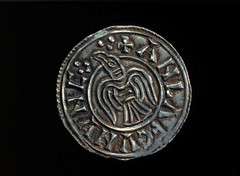 The biggest Viking ship ever found is coming to London as part of a major exhibition that aims to expand the popular image of the Scandinavian plunderers, whose voyages took them as far as Asia and North America.
The biggest Viking ship ever found is coming to London as part of a major exhibition that aims to expand the popular image of the Scandinavian plunderers, whose voyages took them as far as Asia and North America.
The 1,000-year-old, 37-meter (120-foot) wooden longboat discovered on the banks of a fjord in Roskilde, Denmark, in 1997 is the centerpiece of "Vikings: Life and Legend," which opens at the British Museum in March.
The Vikings set out in ships like these from Scandinavia more than a millennium ago, traveling as far as Newfoundland and Morocco, and occupying territory from Greenland to Britain to France.
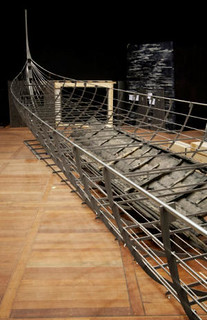 Curator Gareth Williams said the show — the British Museum's first major Viking exhibition since 1980 — will look at the Nordic voyagers' skills as warriors and seafarers, and also their role as explorers, traders and creators of sophisticated culture.
Curator Gareth Williams said the show — the British Museum's first major Viking exhibition since 1980 — will look at the Nordic voyagers' skills as warriors and seafarers, and also their role as explorers, traders and creators of sophisticated culture.
He said it's not surprising the Vikings' violent side has been emphasized in accounts from countries they raided.
"If your monastery is being burned down, you don't take time to admire the beautiful jewelry won by the people burning down your monastery," he said.
Williams said the exhibition would not adopt a "fluffy bunny" approach or try to sanitize the Vikings, but would present a rounded view.
Exhibits include richly decorated weapons and treasures such as the Vale of York Hoard, a collection of gold and silver objects found in northern England in 2007. William said the trove includes Irish jewelry and coins from Afghanistan and Uzbekistan — "the whole of the Viking world in one hoard."
The exhibition is co-created with the National Museum of Denmark — where it is on display until November — and National Museums in Berlin. It runs at the British Museum from March 6 to June 22, 2014, and moves to Berlin in September 2014.
Williams said transporting the fragile remains of the Viking ship, whose ancient wooden beams are held in a modern steel frame, was surprisingly straightforward.
"As one might expect of a Scandinavian-designed ship, it comes flat-packed," he said.
To read the complete article, see: Vikings to invade British Museum (www.denverpost.com/ci_24189873/vikings-invade-british-museum)
FEATURED WEB PAGE: THE COINS OF ECUADOR
This week's Featured Web Page is an article in CoinWeek on Collecting The Coins of Ecuador by Carlos Jara.The coins of Ecuador have traditionally been both respected as difficult to obtain, and very popular among collectors. While not a particularly extensive series (as opposed to, say, Colombia), the Ecuadorean series is complex nonetheless. Thankfully, good references about it have been available for a long time. For example, Dale Seppa’s checklists are a great and inexpensive starting point. Years ago, the more serious collector had to search for a copy of Ortuño’s "Historia Numismática de Ecuador", which is not that easy to find. While it is the best in my opinion, it failed to correctly analyze the 1862 issues and since it is in Spanish, it is difficult for some collectors. The alternative was Hoyos’ "La Moneda Ecuatoriana a través de los tiempos” which was also in Spanish. Today we have an excellent alternative in Michael Anderson’s authoritative reference ("Numismatic History of Ecuador") which is written in English, and, as a bonus not usually encountered in our area of interest, very well written.
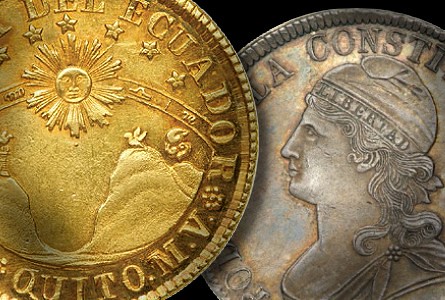
www.coinweek.com/featured-news/
collecting-coins-ecuador/

